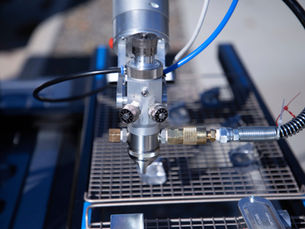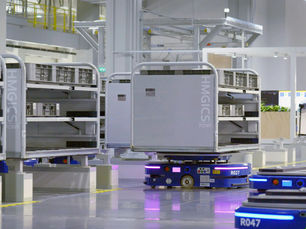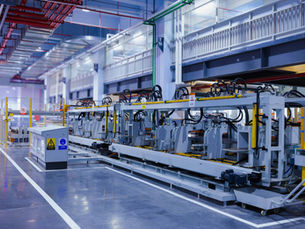top of page


Energy‑Efficient Spray Robots: Reducing Paint Waste & Cycle Time
Emerging research and industrial innovations show that subtle changes in robot motion—not just hardware upgrades—can save 20–30% in energy and cycle time without degrading finish quality for robot spray painting.
3 min read


Top 5 Industrial Automation Technologies Transforming Modern Warehouses
From small businesses to massive 3PL operations, industrial automation is no longer a futuristic option—it’s a competitive necessity. But what technologies are truly leading this transformation?
3 min read


Direct Drive Linear Motor Applications in Precision Robotics: Key Uses and Benefits
Direct drive linear motor applications are redefining the standards of precision robotics by delivering high-speed, backlash-free motion with exceptional accuracy. This article explores how industries like semiconductor manufacturing, medical devices, and advanced automation benefit from these motors’ superior performance, reduced maintenance needs, and real-time responsiveness.
8 min read


Direct Drive Linear vs Traditional Motors: Which Is Better for Your Application?
When comparing Direct Drive Linear vs Traditional motors, the choice comes down to precision, speed, maintenance, and lifecycle costs. This guide breaks down how each motor type performs in real-world automation settings—helping engineers and decision-makers choose the right solution for their application.
6 min read


Direct Drive Linear Motor Cost Explained: How Smart Investment Boosts Efficiency and Cuts Long-Term Expenses
Understanding direct drive linear motor cost is essential for manufacturers seeking to boost efficiency without sacrificing precision. This guide explores the real-world pricing factors, long-term savings, and ROI potential of direct drive systems. From initial investment to energy savings and reduced maintenance, it offers a clear breakdown to help you make informed, cost-effective decisions for your automation strategy.
8 min read


Machine Tending Robot Solutions: How Robotic Arms and End Effectors Improve Manufacturing Efficiency
In today's competitive manufacturing environment, machine tending robots, are revolutionizing production lines by automating repetitive tasks, reducing downtime, and improving accuracy. This article explains how robotic arms and specialized end effectors work together—with technology often inspired by blue sky robotics—to boost manufacturing efficiency while cutting costs and ensuring safety.
6 min read


Is a KUKA Robot Worth the Investment? Price Breakdown Explained
The price of a KUKA robot depends on its model, payload capacity, and required customization. In many projects, integration with blue sky robotics can enhance overall performance and flexibility. KUKA offers robots for various tasks—from light assembly to heavy-duty welding and palletizing—with costs rising as technical specifications such as higher payload capacities, extended reach, and robust motors and sensors are required.
8 min read


Industrial Robotics Explained: Key Trends, Benefits, and Cost Insights
Industrial robotics is revolutionizing modern manufacturing by merging intelligent automation with advanced mechanical systems. From AI-powered cobots to digital twin simulations, this article explores how innovations—like those from Blue Sky Robotics—are boosting productivity, enhancing safety, and transforming industries worldwide. Discover the evolution, benefits, costs, and future trends shaping the industrial robotics landscape.
8 min read


The Future of Industrial Automation: Applications, Brands, Safety Standards, and Cost
The future of industrial automation is unfolding rapidly, driven by advances in robotics, AI, and the Industrial Internet of Things...
3 min read
bottom of page
